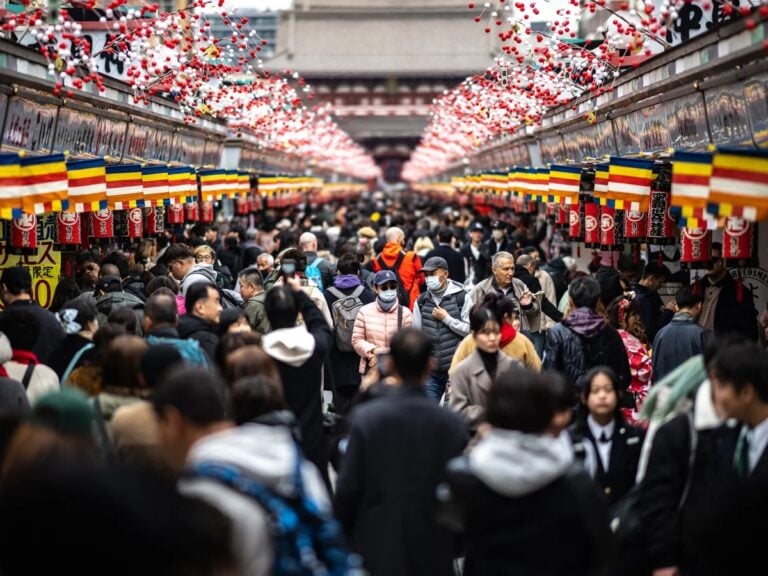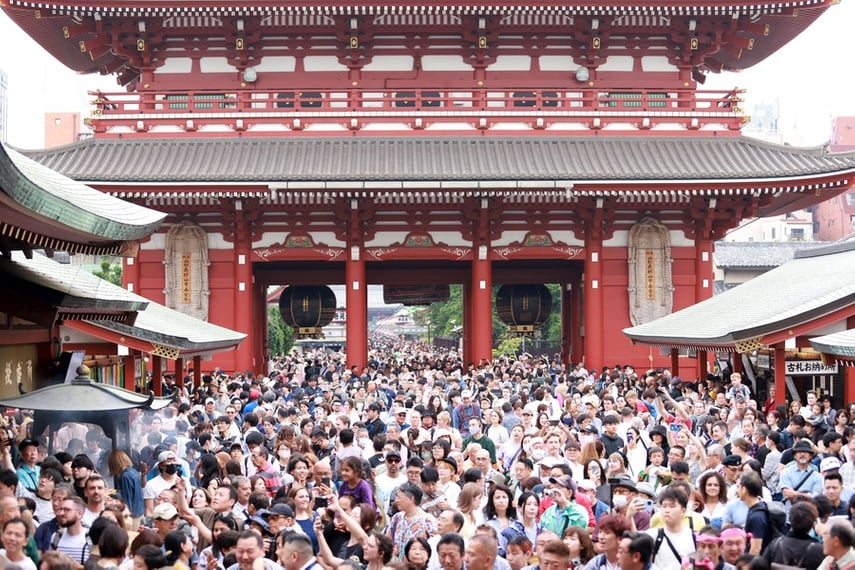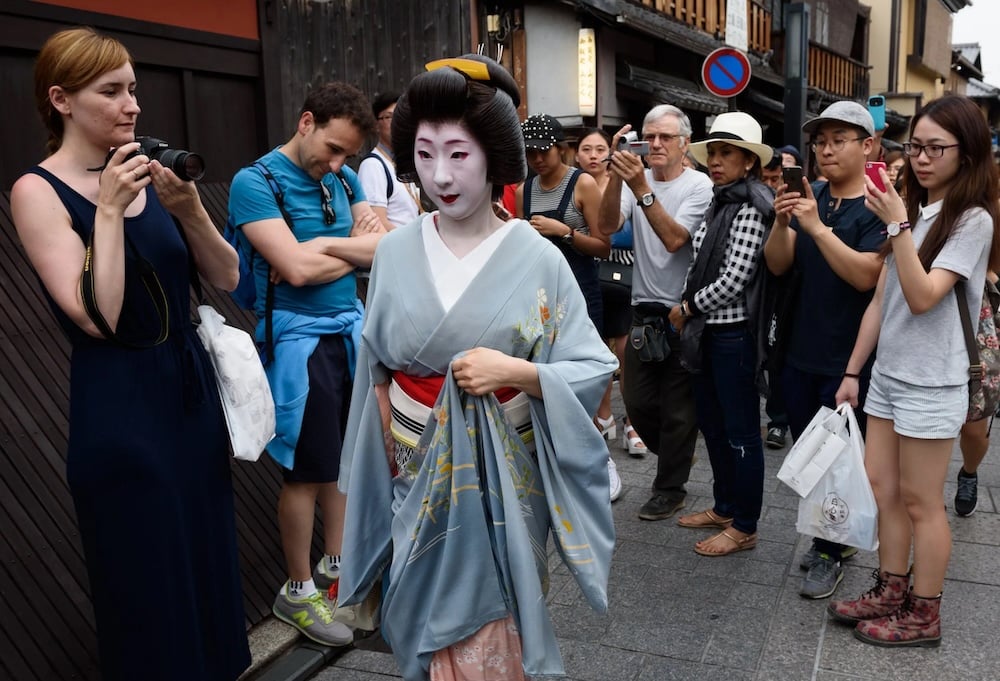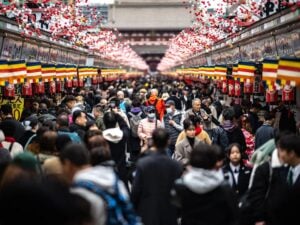
Japan has long been an attractive destination, but the recent tourism surge has been further boosted by the weak yen. The Japan National Tourism Organization (JNTO) estimates that nearly three million travelers visited Japan in August 2024, marking a 16.4% increase over the same period in 2019. From January to August 2024, Japan received a total of twenty-four million tourists, representing a 31.5% year-on-year growth compared to 2023. Since late 2019, the yen has depreciated by 44% against the US dollar and by 26% against a basket of other currencies. Thus, it is easy to see how this favorable exchange rate has made trips to Japan more affordable.
The growth in tourism is driven not only by foreign visitors but also by an increase in domestic travel among Japanese residents, who are opting for local trips due to reduced purchasing power abroad caused by the weaker yen. Regionally, Tokyo experienced the most substantial increase in both domestic and international tourists, with a 42% increase in the first four months of 2024 compared to the same period in 2019, followed by Osaka, which saw a 16% increase.
In looking at the available numbers for 2023, foreign visitors spent a record-breaking ¥5.3 trillion (US $30 billion), marking a 9.9% increase from 2019 pre-pandemic levels. Hotel prices reached an almost 30-year high in 2024, with the average cost for a hotel room increasing approximately 20%. This is great news for businesses in the travel industry, especially hotels.

Challenges to Increase Tourists to Japan
Continued growth in tourism is beneficial to the Japanese economy, and the government is relying on tourism to play an increased role in the nation’s economic development. During Fumio Kishida’s tenure as Prime Minister, he reaffirmed the ambitious goal of increasing annual foreign visitors to sixty million and raising spending to fifteen trillion yen by 2030. However, achieving this target presents significant challenges.
What are the key hurdles to making this vision a reality? Below is a list of pressing issues that highlight the challenges associated with accommodating an increase in tourist numbers.
Staff Shortages for hotels, guides, and other industry-related jobs: most tour operators are struggling with staff shortages and demand is showing no signs of slowing down. I recently saw an event posted by a Japan-based tour operator announcing a meetup event to recruit tour guides & tour leaders and offering hiring bonuses as well as other incentives for joining. It is my first time seeing this urgent request for help.
Multilingual Staff: hotels which have not fully automated check-in or offer a more traditional experience are always in need of English-speaking staff for the front desk. While much of the work in a hotel is not customer facing, many jobs are and finding good candidates has been hard for hotel operators as the turnover is high. The demand for multilingual staff is growing across various roles in the tourism industry, including customer service agents, tour guides, and instructors or presenters for cultural experiences such as tea ceremony and cooking classes. English is not the only foreign language in demand as visitors from Korea and China are among the top tourists to Japan.
Traveling Beyond the Golden Route: The “Golden Route” typically refers to the journey from Tokyo to Kyoto, often with stops in Osaka and Nara. These three cities—Tokyo, Osaka, and Kyoto—together attract over half of all foreign tourists visiting Japan.
Tokyo, a large metropolis, offers diverse neighborhoods and experiences for travelers. In contrast, Kyoto, though smaller, has become a focal point of local dissatisfaction with overtourism. Despite modest growth in overall visitor numbers, Kyoto has seen the need to implement measures to address overcrowding and misconduct. For example, it has prohibited tourists from entering the picturesque alleyways of the Geisha district, which had become very crowded and saw inappropriate behavior by visitors.
While Tokyo and Kyoto each have half of their tourists coming from abroad, Kyoto stands out with a foreign-tourists-to-population ratio of 50%—the highest in Japan. This highlights the city’s unique challenges in balancing cultural preservation with tourism.
Efforts are underway by tour operators to develop travel plans beyond Japan’s three main cities, but building momentum and raising awareness about the attractions in other regions takes time. Social media influencers also play a crucial role in encouraging travelers to explore off-the-beaten-path destinations and discover unique experiences.
Smaller cities and rural areas in Japan face additional challenges in meeting the expectations of foreign visitors. Many of these towns have seen limited investment since the bursting of Japan’s bubble economy in the early 1990s, leading to aging infrastructure and facilities. Significant renovations and upgrades are needed to attract and accommodate international travelers, ensuring these areas can compete with the well-established appeal of major cities.

An example of a revitalized destination is Atami, a seaside town located about a 50-minute Shinkansen ride from Tokyo. Once a popular getaway for Japanese tourists, Atami fell out of favor during the peak of Japan’s overseas travel heyday. However, now in 2024 the town is experiencing a resurgence, attracting both foreign visitors and a renewed interest from domestic travelers. The city is undergoing a building boom, with old hotels being replaced by modern accommodations. Visitors are encouraged to enjoy Atami’s nostalgic, retro charm while it lasts, as the wave of new construction may soon transform its unique character.
Other towns, such as Niseko in Hokkaido and Hakuba in Nagano, serve as other success stories. Both have leveraged their appeal to international visitors to achieve remarkable revitalization and growth, setting an example for how smaller destinations in Japan can thrive through tourism.
Preserving the Value of the Japan Experience: As attractions in Japan become overcrowded and overpriced, the overall experience for visitors decreases. Visitors don’t want to wait in long lines or pay exorbitant prices for a mediocre experience. Many visitors to Japan have over hyped their trip on social media so everyone expects a transcendental experience and anything that falls short is a disappointment. I have seen comments on social media from visitors on being ‘underwhelmed’ by some of the places they visited while in Japan.
With the growing profitability of providing services to tourists, many people are entering the industry, but not all bring honesty or expertise to their roles. Unfortunately, where money flows, some will exploit trust for personal gain. Reports have surfaced of stores inflating prices to overcharge visitors and restaurants imposing higher fees for foreign guests. Instances of smaller-scale scams, such as deceptive practices at Buddhist temples, have also been highlighted in the media.
Another concerning issue is the rise of unlicensed drivers, which threatens Japan’s reputation as a safe and reliable tourist destination. There is a growing anxiety that if incidents involving such drivers increase, Japan may lose its image of safety, causing visitors to perceive it as a “dangerous” place to travel.
Preserving Japan as a Premier Travel Destination
The positive impressions many repeat visitors have of Japan are often attributed to the nation’s renowned hospitality, politeness, cleanliness, thoughtfulness, and courteous service—characteristics of daily life in Japan. While the weak yen currently serves as a tailwind for attracting tourists, it is not a permanent advantage. Even if the yen remains weak, the currency-driven momentum in the tourism sector may wane over time as travelers explore other destinations. Japan’s long-term success in maintaining a thriving tourism industry will hinge on its ability to sustain and enhance its competitiveness relative to other countries.












